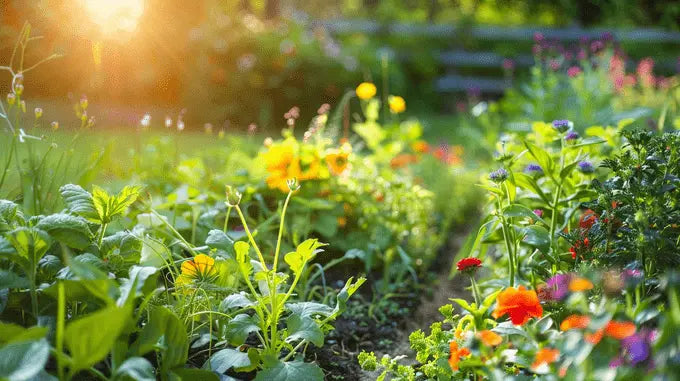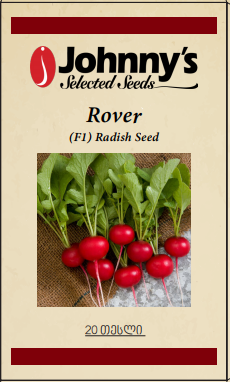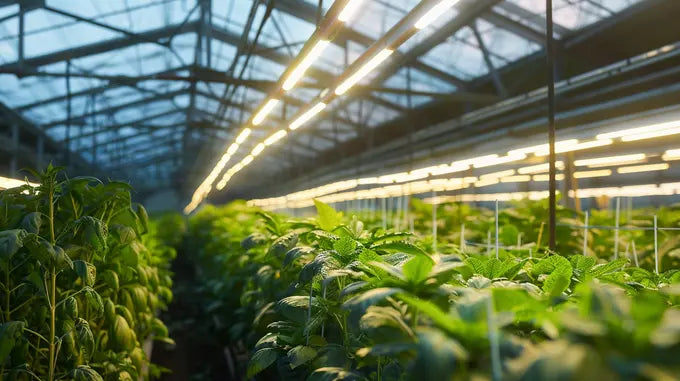Gardening is not only a pleasurable hobby but also a practical endeavor that allows us to cultivate healthy, natural products, enhance the environment, and reap therapeutic benefits. However, to produce high-quality and abundant harvests, it is essential to consider seasonal variations and carefully plan garden activities.
Spring Season
Spring is the most active and crucial period for gardening. This is when soil preparation begins, and the first crops are planted or sown. Spinach, cilantro, parsley, broccoli, basil, cauliflower, carrots, and beets are typically planted during this time.

Selecting the optimal planting time for each crop, considering local climatic conditions, is vital. Proper soil preparation in spring is indispensable. The soil should be loosened, cleared of weeds, and enriched with organic matter (compost, bio-humus, peat) or mineral fertilizers (nitrogen, phosphorus, potassium). This improves soil structure and fertility, directly impacting crop quality and yield.
Monitoring weather conditions, particularly temperature fluctuations and precipitation, is essential to protect young plants. In the event of frost, it is advisable to temporarily cover seedlings with insulating materials. Regular watering, especially during dry spells, is crucial.
Finally, preventing pests and diseases is paramount in spring. Effective measures include soil cultivation, pruning, crop rotation, and the judicious use of biological and chemical control methods. Timely prevention significantly reduces losses and promotes healthy plant growth throughout the season.
Summer Season
Summer is one of the most productive periods for gardening. This season is ideal for cultivating heat-loving crops such as tomatoes, cucumbers, eggplants, peppers, and corn. Primarily planted in late May and early June, some of these crops can thrive throughout the summer.

A primary challenge during this period is the combination of summer heat and drought, which can adversely affect plant growth and yield. High temperatures and low humidity can induce plant stress, leading to leaf yellowing, stunted growth, and blossom drop.
To mitigate these challenges, optimize watering practices, apply mulch, and provide shade when necessary. Consistent watering during the cooler morning and evening hours is crucial, as evaporation is minimal during these times. Mulching helps conserve soil moisture, prevents soil overheating, and suppresses weed growth.

During the summer, diligent plant care and training are essential. This involves removing excess foliage, harvesting ripe fruits promptly, and pruning certain crops to manage size and shape, ultimately enhancing fruit quality.
As summer concludes, the harvesting season begins, allowing gardeners to savor fresh, homegrown, and organic produce daily. A portion of the harvest can be preserved through canning or freezing for winter enjoyment.
Autumn Season
Autumn is a transitional phase in gardening, characterized by the continuation of summer harvests and the initiation of preparations for the upcoming season. This period is conducive to sowing and planting late-season crops such as radish, cilantro, arugula, celery, and turnips. These crops exhibit excellent adaptability to cooler autumn temperatures and provide a supplementary harvest before the onset of early frosts.

Autumn is also an optimal time for transplanting perennial garden plants including fruit trees, berries, ornamental shrubs, and evergreens. Plants transplanted between September and October establish strong root systems in their new locations and flourish during the subsequent season.
Active preparations for the following season commence in autumn. This entails clearing the garden of fallen leaves and plant debris, cultivating the soil for winter, and incorporating organic and mineral fertilizers. Thoroughly prepared soil forms a solid foundation for new crops in the spring, resulting in abundant harvests.
From September to November, crops such as cucumbers, chard, cilantro, parsley, and various salad greens can be cultivated in greenhouses. Establishing an optimal microclimate, including appropriate light, temperature, humidity, and ventilation, is essential for their success.

Autumn is also the ideal season for preserving and pickling fruits and vegetables. Produce harvested during this period possesses exceptional flavor and aroma. By adhering to proper storage techniques, it is possible to extend shelf life, replenish winter supplies, and maintain nutritional value and vitamin content.
Winter Season
While winter is a relatively dormant period for gardening, it is far from inactive. This season is primarily dedicated to preparatory tasks.
Care for perennial plants, such as fruit trees and shrubs, is crucial during the winter months. Pruning to rejuvenate, shape, and enhance productivity is essential. Post-pruning, whitewashing branches with lime and protecting the trunk with fencing deter pests like mice. Removing damaged or diseased branches and loosening surrounding soil is also beneficial.
From December to February, cultivating herbs and vegetables like cilantro, parsley, tomatoes, and broccoli within greenhouses remains feasible. However, optimal greenhouse heating and lighting, especially during shorter days, are paramount. Maintaining precise control over microclimatic factors, such as humidity and temperature, is essential.

Actively preparing the soil for early spring is another key winter task. Deep plowing, incorporating organic fertilizers (well-rotted manure, compost), and loosening heavy clay soil are necessary steps. Correcting soil acidity through liming, when required, is particularly important. A well-prepared soil foundation promotes healthy seed germination and seedling growth in the spring.

Winter also offers an ideal opportunity to combat pests and weeds. While intense frost naturally reduces their populations, gardeners should complement these efforts by digging the soil, removing and burning debris, and applying appropriate insecticides and fungicides. These measures significantly curtail their proliferation during the next season, safeguarding crops from potential losses.
Other Important Aspects of Seasonal Gardening
In seasonal gardening, factors such as:
- Soil preparation and fertilization
- Proper selection of crops and adherence to sowing/planting dates
- Watering and moisture regulation
- Plant protection and pest control
- Consideration of natural processes
These factors are interconnected and collectively create the foundation of seasonal gardening. Systematic care and attention to detail are crucial for maintaining sustainable and productive farming.
Each season offers new opportunities and challenges, so it's important to carry out all necessary measures in a timely manner and properly care for plants and crops.

